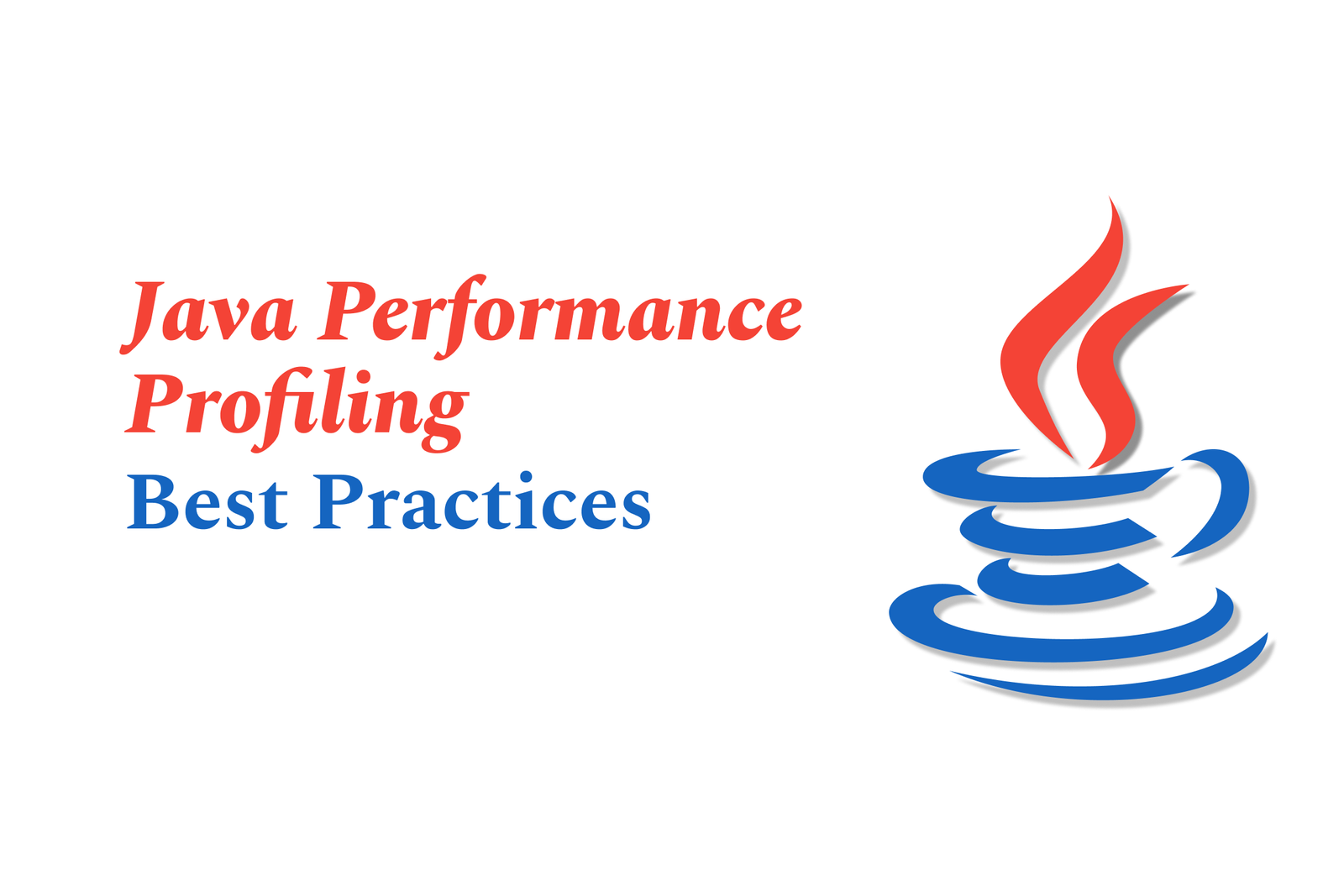Java performance profiling best practices
Java performance profiling involves analyzing application runtime to identify bottlenecks and optimize resource use. Best practices include using low-overhead sampling, combining tools with observability platforms, profiling incrementally, and monitoring CPU, memory, and thread activity for effective optimization.
Java Performance Profiling Best Practices
1 ) Understanding Java Profiling
Java profiling involves analyzing the runtime behavior of Java applications to identify performance bottlenecks, optimize resource usage, and improve overall efficiency. Profilers collect detailed data on method execution times, memory allocation, thread activities, and I/O operations, enabling developers to pinpoint problematic code sections consuming excessive CPU or memory.
2 ) Types of Java Profilers
Sampling Profilers: Periodically capture snapshots of the application's call stack to identify hotspots without modifying code.
Instrumentation Profilers: Inject code into the application to gather comprehensive, detailed performance metrics by modifying bytecode.
3 ) Use Cases for Java Profilers
Profilers assist in:
Performance Optimization: Detect slow methods or inefficient processes affecting application speed.
Memory Leak Detection: Track object allocation and garbage collection to prevent out of memory errors.
Thread Profiling: Identify thread contention, deadlocks, and concurrency issues in multi threaded environments.
4 ) Popular Java Profiling Tools in 2024
VisualVM: Free, provides basic CPU, memory, and thread profiling.
YourKit: Premium tool with advanced profiling features and intuitive UI.
JProfiler: Comprehensive commercial profiler, ideal for complex performance issues.
NetBeans Profiler: Open source profiler integrated with NetBeans IDE.
IntelliJ Profiler: Integrated with IntelliJ IDEA, offers convenient profiling inside the IDE.
Async Profiler: Low overhead sampling profiler for CPU and allocation profiling.
Arthas: Command line tool for real time profiling and diagnostics.
Digma Continuous Feedback: Enhances traditional profiling by analyzing observability data to speed up result interpretation and root cause analysis.
5 ) Best Practices for Effective Java Profiling
Attach profilers early during troubleshooting rather than waiting for total failures.
Combine profiling with observability platforms like Digma for faster diagnosis and actionable insights.
Use sampling profilers for low overhead initial assessment and switch to instrumentation profilers for deep dives.
Analyze call trees carefully to localize performance bottlenecks and resource hogs.
Profile code changes incrementally to identify regressions about recent commits or updates.
Monitor critical dimensions: CPU usage, memory allocation patterns, garbage collection, and thread activity for a holistic performance view.
6 ) Why Java Profiling Is Crucial
Profiling prevents costly hardware upgrades by identifying software inefficiencies early. It improves user experience with faster response times and reduces operational cloud costs by optimizing resource consumption.
7 ) Challenges and Solutions
Traditional profilers like YourKit, while powerful, can produce complex data that are time consuming to manually analyze. Augmenting them with continuous feedback tools like Digma helps interpret data faster, prioritize performance issues by impact, and focus optimization efforts effectively.
Conclusion
Java performance profiling is essential for building robust, responsive applications. Leveraging a mix of modern profiling tools with observability insights and following best practices ensures efficient fault detection, precise bottleneck identification, and systematic performance improvements in Java software projects.
https://justacademy.in/news-detail/android-cloud-backup-features
https://justacademy.in/news-detail/devtools-updates-flutter-devs-should-know
https://justacademy.in/news-detail/apple?s-new-swift-playgrounds-update-for-2025
https://justacademy.in/news-detail/what?s-new-in-swift-playgrounds-5.5
https://justacademy.in/news-detail/flutter-open-source-tools-roundup
Related Posts
In 2025, top Angular libraries offer modern, feature-rich components and tools for building dynamic web apps. From powerful data grids to low-code platforms like UI Bakery, these libraries enhance development speed, UI design, and scalability, making them essential for Angular developers.
Migrating from AngularJS to Angular 17 involves gradually upgrading your app by running both frameworks together using tools like ngUpgrade, rewriting components in TypeScript, and adopting Angular’s modern architecture to enhance performance, maintainability, and long-term support.
Angular state management tools help organize and handle app data efficiently, improving scalability and maintainability. Popular options include NgRx for robust, RxJS-based patterns, and newer Signal Store solutions that offer simpler, reactive approaches integrated tightly with Angular’s latest features.
RxJS in Angular empowers developers to manage asynchronous data streams with powerful operators like `forkJoin`, `combineLatest`, and `zip`. Mastering these key operators in 2025 is essential for building efficient, reactive applications that handle complex event sequences seamlessly.
Angular performance optimization in 2025 focuses on improving app speed and responsiveness by using techniques like OnPush change detection, lazy loading, efficient data caching, and AOT compilation. These practices reduce load times, enhance user experience, and ensure scalable, fast Angular applications.
In 2025, Angular remains preferred for large-scale, enterprise apps with its robust, all-in-one framework, while Vue attracts developers seeking simplicity and fast development for smaller projects. Both frameworks excel, with choice driven by project needs and team expertise.
Angular Signals are a new reactive primitive in Angular 16 that enable fine-grained, efficient change detection by automatically tracking dependencies and updating only affected parts of the UI. They simplify state management and boost app performance, revolutionizing Angular's reactivity model.
Angular interview questions to prepare in 2025 focus on core concepts like components, directives, data binding, routing, and dependency injection, along with TypeScript mastery and latest Angular features to ensure strong practical knowledge for building scalable, efficient web applications.
AngularJS reached its official end of support in January 2022, meaning no further updates or security patches. To ensure app security and performance, developers should consider migrating to modern Angular versions or seek third-party long-term support options if immediate migration isn’t possible.
The Angular Roadmap 2025 highlights upcoming features focused on improving developer experience and performance, including zoneless Angular, Signals integration, enhanced Forms, async data handling, improved HMR, and expanded Angular Material/CDK enhancements, driving modern, efficient web app development.










